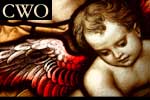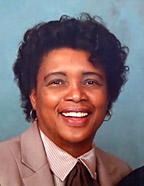




All bright-eyed and bushy-tailed, we boarded our bus right after breakfast and our first stop was Gordon’s Calvary, which is a place that tradition tells us was known for executions of offenders in ancient Israel. The reason this place is called Gordon’s Calvary is because it was discovered by a British military leader named General Charles Gordon in the 19th century and named after him.
Gordon’s Calvary is a rocky cliff with an over-hang in the shape of a skull with two holes that resemble eye sockets. The entire area comprises a rocky cliff at the edge of an ancient cemetery, a well-tended garden below with beautiful flowers and trees, and a tomb that is hewn out of a rock. Tradition tells us that Gordon was convinced that this was the place where Jesus was crucified and that his body was placed in the nearby tomb, as mentioned at Mark 15:43-46. That tomb is now called the Garden Tomb and is the focus of thousands of visitors each year.
The garden is peaceful and is ideal for meditation and prayer, and our group participated in a communion service there given by our host, Pastor Peter Youngren.
Something of note is that Gordon’s Calvary is in direct controversy with the Church of Holy Sepulchre, which is built on a spot where the Roman Catholic tradition says Jesus was crucified and buried. There will be more about this place later on.
Next we visited the Upper Room, sometimes called the Room of the Last Supper, or the Cenacle (the word “cenacle” is derived from the Latin word “cena”meaning “dinner”). This second-storey room is a large hall and for most of the day it is filled with people going to and fro to see this place where we are told that Jesus ate His last Passover meal with His disciples, and this meal turned out to be the beginning of the Lord’s Supper for followers of Jesus.
The Upper Room is supported by three huge pillars and boasts an arched design in the ceiling -- definitely Gothic in style of architecture. The ceiling is ornate and is a masterpiece. Gazing in awe at this room brought my mind to another masterpiece: that famous painting of the Last Supper by Leonardo Da Vinci that has inspired thousands of people all over the world.
This place, situated on Mt. Zion in Jerusalem is also the location that tradition says was the site of three other major occurrences in the life of Jesus: this is where Jesus washed His disciples’ feet, also where He made an appearance to His disciples after His resurrection, and the place where the Holy Spirit descended upon Jesus’ disciples (Acts 1:13, 2:1-4), and making the beginning of the New Testament church.
Gordon’s Calvary is a rocky cliff with an over-hang in the shape of a skull with two holes that resemble eye sockets. The entire area comprises a rocky cliff at the edge of an ancient cemetery, a well-tended garden below with beautiful flowers and trees, and a tomb that is hewn out of a rock. Tradition tells us that Gordon was convinced that this was the place where Jesus was crucified and that his body was placed in the nearby tomb, as mentioned at Mark 15:43-46. That tomb is now called the Garden Tomb and is the focus of thousands of visitors each year.
The garden is peaceful and is ideal for meditation and prayer, and our group participated in a communion service there given by our host, Pastor Peter Youngren.
Something of note is that Gordon’s Calvary is in direct controversy with the Church of Holy Sepulchre, which is built on a spot where the Roman Catholic tradition says Jesus was crucified and buried. There will be more about this place later on.
Next we visited the Upper Room, sometimes called the Room of the Last Supper, or the Cenacle (the word “cenacle” is derived from the Latin word “cena”meaning “dinner”). This second-storey room is a large hall and for most of the day it is filled with people going to and fro to see this place where we are told that Jesus ate His last Passover meal with His disciples, and this meal turned out to be the beginning of the Lord’s Supper for followers of Jesus.
The Upper Room is supported by three huge pillars and boasts an arched design in the ceiling -- definitely Gothic in style of architecture. The ceiling is ornate and is a masterpiece. Gazing in awe at this room brought my mind to another masterpiece: that famous painting of the Last Supper by Leonardo Da Vinci that has inspired thousands of people all over the world.
This place, situated on Mt. Zion in Jerusalem is also the location that tradition says was the site of three other major occurrences in the life of Jesus: this is where Jesus washed His disciples’ feet, also where He made an appearance to His disciples after His resurrection, and the place where the Holy Spirit descended upon Jesus’ disciples (Acts 1:13, 2:1-4), and making the beginning of the New Testament church.
While we were there we witnessed another group of tourists, some of them in an emotional frenzy and could hardly stand. They were shouting, singing, praying and being slain in the Spirit. I was excited to be touching on biblical history in a real way and expected a rushing wind and tongues of fire resting on those worshippers as it happened in the Book of Acts, however no such thing took place.
Next we visited King David’s Museum, which is in the same building on a lower level. In this museum there is a large sarcophagus covered in red velvet and adorned with the Star of David upon it; there is also a sign saying “King David’s Tomb” and there were separate entrances for men and women to view the tomb. As can be expected, there was a crowd there as well.
We wandered around the various rooms, trying to keep in touch with Doron, our tour guide, while making our way around a lot of Jewish people who were saying prayers.
We wandered around the various rooms, trying to keep in touch with Doron, our tour guide, while making our way around a lot of Jewish people who were saying prayers.
Carpenters were busy doing renovation work in various parts of the building and their constant hammering were in competition with the voice of our tour guide and this did not make it easy for us to follow what he was saying. However, all in all, just being in the presence of King David’s tomb was enough for most of us.
As I stood at the tomb, two of my favourite psalms came to mind; they were Psalm 23 and Psalm 91, which tradition tells us were written by King David. I thought also about the hero stories of that “man who was after God’s own heart” (Acts 13:22), his conquest of Goliath, his issues with Saul, and other biblical accounts, then I began to wonder “Am I standing at the place where King David’s bones lie? Or is it merely a place built in memory of that great king?”
I did not have to think long. A man from another group made the remark that he did not think the remains of King David were in that sarcophagus but were somewhere else and this sarcophagus was just a structure erected in memory of him…well, so much for that!
As usual, in the courtyard, vendors did a brisk business, selling everything from postcards to hats, and you know, I bought a hat, something very necessary to beat the heat in Israel.
Next stop was a visit to the Church of St. Peter in Gallicantu. It is a beautiful, modern structure on Mount Zion in Jerusalem, which tradition tells us has been built on the ruins of the house of Caiaphas, the High Priest to whom Jesus was brought for trial. In Israel, it is common to see buildings that were built on top of other old structures and the amazing thing is that the builders made a great job of doing that.
As I stood at the tomb, two of my favourite psalms came to mind; they were Psalm 23 and Psalm 91, which tradition tells us were written by King David. I thought also about the hero stories of that “man who was after God’s own heart” (Acts 13:22), his conquest of Goliath, his issues with Saul, and other biblical accounts, then I began to wonder “Am I standing at the place where King David’s bones lie? Or is it merely a place built in memory of that great king?”
I did not have to think long. A man from another group made the remark that he did not think the remains of King David were in that sarcophagus but were somewhere else and this sarcophagus was just a structure erected in memory of him…well, so much for that!
As usual, in the courtyard, vendors did a brisk business, selling everything from postcards to hats, and you know, I bought a hat, something very necessary to beat the heat in Israel.
Next stop was a visit to the Church of St. Peter in Gallicantu. It is a beautiful, modern structure on Mount Zion in Jerusalem, which tradition tells us has been built on the ruins of the house of Caiaphas, the High Priest to whom Jesus was brought for trial. In Israel, it is common to see buildings that were built on top of other old structures and the amazing thing is that the builders made a great job of doing that.
I am always amazed at the structures of the ancient world, how great buildings were created without the use of modern equipment. We have to say those builders were even more talented than those of today because of their lack of the sophisticated equipment we now have at our disposal.
If my knowledge of Latin serves me right the word "Gallicantu" means “singing or crowing rooster” and while on tour of the building something funny happened. As Doron, our tour guide was recalling the story to us about Peter’s denial of Christ and how the cock crowed three times, a cock crowed somewhere in the vicinity. And before long there was a lot of cock crowing taking place. Seems like there has always been a lot of chicken-rearing in Jerusalem.
At this church we were shown a pit below the building, which tradition says had served as a holding place for Jesus before He was taken to Pilate.
Back at our hotel, the Crowne Plaza, we enjoyed a wonderful dinner and before retiring for the night we had another great teaching by Pastor Peter Youngren.
If my knowledge of Latin serves me right the word "Gallicantu" means “singing or crowing rooster” and while on tour of the building something funny happened. As Doron, our tour guide was recalling the story to us about Peter’s denial of Christ and how the cock crowed three times, a cock crowed somewhere in the vicinity. And before long there was a lot of cock crowing taking place. Seems like there has always been a lot of chicken-rearing in Jerusalem.
At this church we were shown a pit below the building, which tradition says had served as a holding place for Jesus before He was taken to Pilate.
Back at our hotel, the Crowne Plaza, we enjoyed a wonderful dinner and before retiring for the night we had another great teaching by Pastor Peter Youngren.


No comments:
Post a Comment